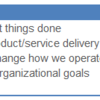My buddy, Derek Thompson, just started at Fishnet Security. Besides peddling Bluecoat and SonicWall Managed Services, he is also selling WAN Optimization. While I have heard of this, I had no idea what it was or how it worked. So Derek invited me to sit down with Doug Kruger of Riverbed. Doug explained it simply enough.
One reason companies consider WAN optimization is if the company needs more bandwidth. It may not need more bandwidth, it may just need to better utilize the Internet Access it already has.
Multi-location companies sometimes have servers at each branch instead of consolidating the servers in one data center. This saves money on maintenance and storage, but in some cases may mean a bigger pipe to access the servers in real-time from the data center.
By consolidating servers into one location can save on manpower, maintenance, and data storage/back-up costs. This is also the sales trigger for Virtualization and Cloud Computing. Save on hardware, labor and storage.
TCP and latency are other reasons that companies buy bigger pipe, when perhaps they could just optimize the current WAN connections (or change to MPLS pipes instead of DIA or dedicated Internet access circuits at each location). TCP is not the most efficient protocol, but it works, just sometimes creating excess packet traffic across the WAN. Latency for real-time applications is also a real problem across the Internet. Lastly, many applications, including Microsoft Office, create excess traffic on the WAN when any document is being opened.
One of the ways that companies like Riverbed optimize the WAN is to eliminate duplicate data traffic. It's called De-Dupe and the effect is to eliminate up to 80% of traffic across the WAN. WANO technology usually will work on eliminating all the excess packet traffic on the WAN, which will usually result in a bandwidth savings.
Riverbed tweeks TCP headers to modify the TCP window sizing issue. The tech here gets beyond me and my discussion, but by modifying the TCP packet headers much of the TCP "noise" on the WAN is cut down. By diminishing the excess packet traffic from apps and TCP, WAN optimization technology is able to save a lot of bandwidth.
Riverbed also works on application latency in a similar vein, by the mitigation of excess packet traffic from apps like Microcosft Office. The technology guesses what the application will ask for and deliver it all at once instead of in 20 different packet streams. Many Fortune 5000 companies use WAN Optimization due mainly to cost cutting force on them by the economy. Data is business critical, so any way that you can save money on the WAN is a good thing.
agents apps att broadband broadsoft cable cableco cellular channel partners clec cloud communications cloud computing commissions data center FCC fcc fiber financials hosted pbx internet itexpo marketing master agency mergers politics sales security sellecom selling strategy TCA telecom is broken UC unified messaging VAR voip vz vzw wireless wireline
- AI (4)
- Add category (2)
- BPI (10)
- BPaaS (10)
- CALEA (2)
- CLEC (250)
- FCC (200)
- FTC (10)
- IOT (17)
- IPTV (14)
- ISP (60)
- Internet (248)
- Marketing (283)
- PBX (180)
- PR (27)
- SDN (46)
- TCA (72)
- TEM (16)
- TMC (26)
- VAD (9)
- VAR (149)
- VDI (10)
- Web 2.0 (48)
- Yahoo (9)
- agents (446)
- amazon (23)
- apps (122)
- backup (41)
- bandwidth (70)
- bellsouth agent (22)
- books (15)
- broadband (235)
- broadsoft (124)
- cableco (200)
- cellular (243)
- certification (17)
- channel (432)
- cloud computing (286)
- colocation (43)
- commissions (103)
- communications (66)
- compliance (22)
- comptia (5)
- conferences (66)
- conferencing (68)
- crm (8)
- cybersecurity (2)
- data center (128)
- disaster recovery (35)
- duopoly (71)
- e-book (4)
- economy (129)
- email (27)
- ethernet (23)
- expo (117)
- fiber (124)
- glossary (2)
- hosted uc (266)
- im/chat (28)
- jobs (32)
- linkedin (38)
- managed services (54)
- master agency (68)
- mergers (395)
- metaswitch (12)
- mobile (57)
- mpls (55)
- msp (50)
- off topic (48)
- organizations (82)
- outage (19)
- politics (136)
- privacy (41)
- saas (92)
- sales and selling (271)
- satellite (17)
- sdn (28)
- security (94)
- sip trunking (83)
- smb (65)
- social network (76)
- spectrum (68)
- startup (27)
- technology (134)
- telco (253)
- tele-presence (22)
- telecommunications (229)
- training (42)
- twitter (44)
- unified communications (258)
- vc (9)
- video (86)
- voip (436)
- webRTC (16)
- wi-fi (29)
- wimax (33)
- wireless (167)
- wireline (179)
- xmpp (5)
- xo (54)
- September 2017
- August 2017
- July 2017
- June 2017
- May 2017
- April 2017
- March 2017
- February 2017
- January 2017
- December 2016
- November 2016
- October 2016
- September 2016
- August 2016
- July 2016
- June 2016
- May 2016
- April 2016
- March 2016
- February 2016
- January 2016
- December 2015
- November 2015
- October 2015
- September 2015
- August 2015
- July 2015
- June 2015
- May 2015
- April 2015
- March 2015
- February 2015
- January 2015
- December 2014
- November 2014
- October 2014
- September 2014
- August 2014
- July 2014
- June 2014
- May 2014
- April 2014
- March 2014
- February 2014
- January 2014
- December 2013
- November 2013
- October 2013
- September 2013
- August 2013
- July 2013
- June 2013
- May 2013
- April 2013
- March 2013
- February 2013
- January 2013
- December 2012
- November 2012
- October 2012
- September 2012
- August 2012
- July 2012
- June 2012
- May 2012
- April 2012
- March 2012
- February 2012
- January 2012
- December 2011
- November 2011
- October 2011
- September 2011
- August 2011
- July 2011
- June 2011
- May 2011
- April 2011
- March 2011
- February 2011
- January 2011
- December 2010
- November 2010
- October 2010
- September 2010
- August 2010
- July 2010
- June 2010
- May 2010
- April 2010
- March 2010
- February 2010
- January 2010
- December 2009
- November 2009
- October 2009
- September 2009
- August 2009
- July 2009
- June 2009
- May 2009
- April 2009
- March 2009
- February 2009
- January 2009
- December 2008
- November 2008
- October 2008
- September 2008
- August 2008
- July 2008
- June 2008
- May 2008
- April 2008
- March 2008
- February 2008
Featured Videos













